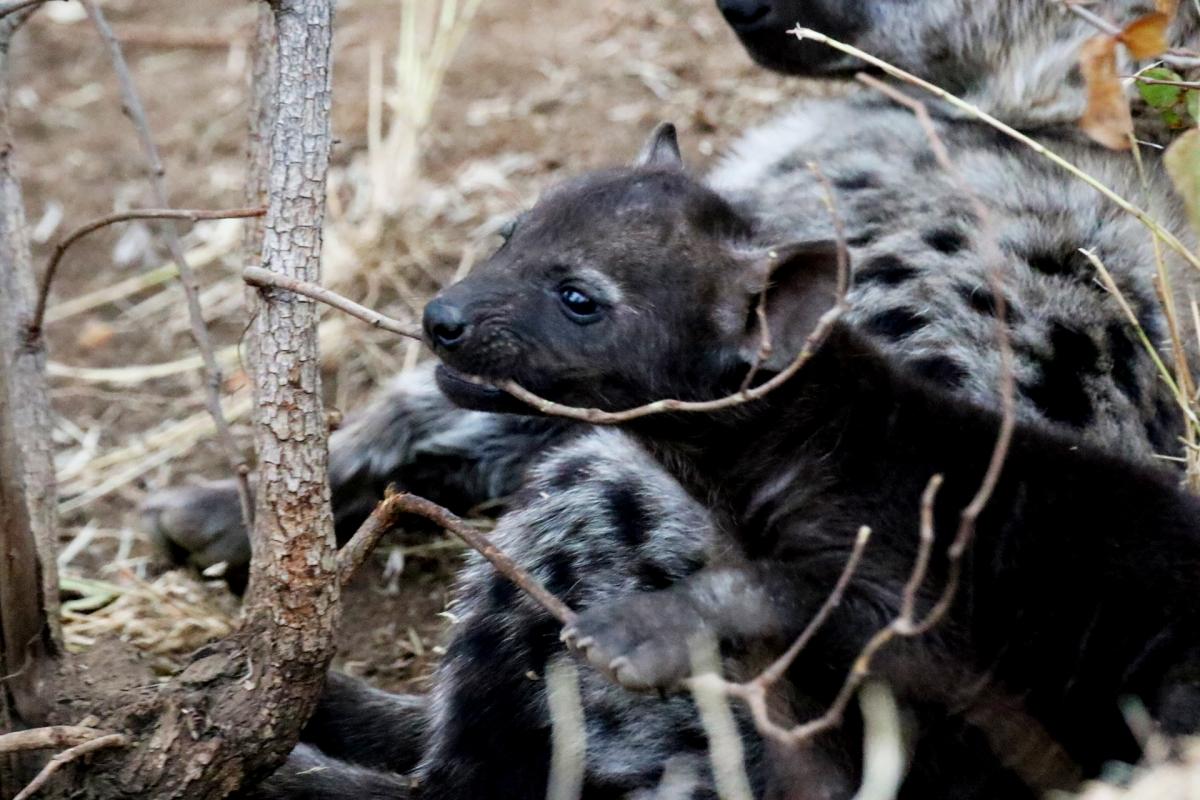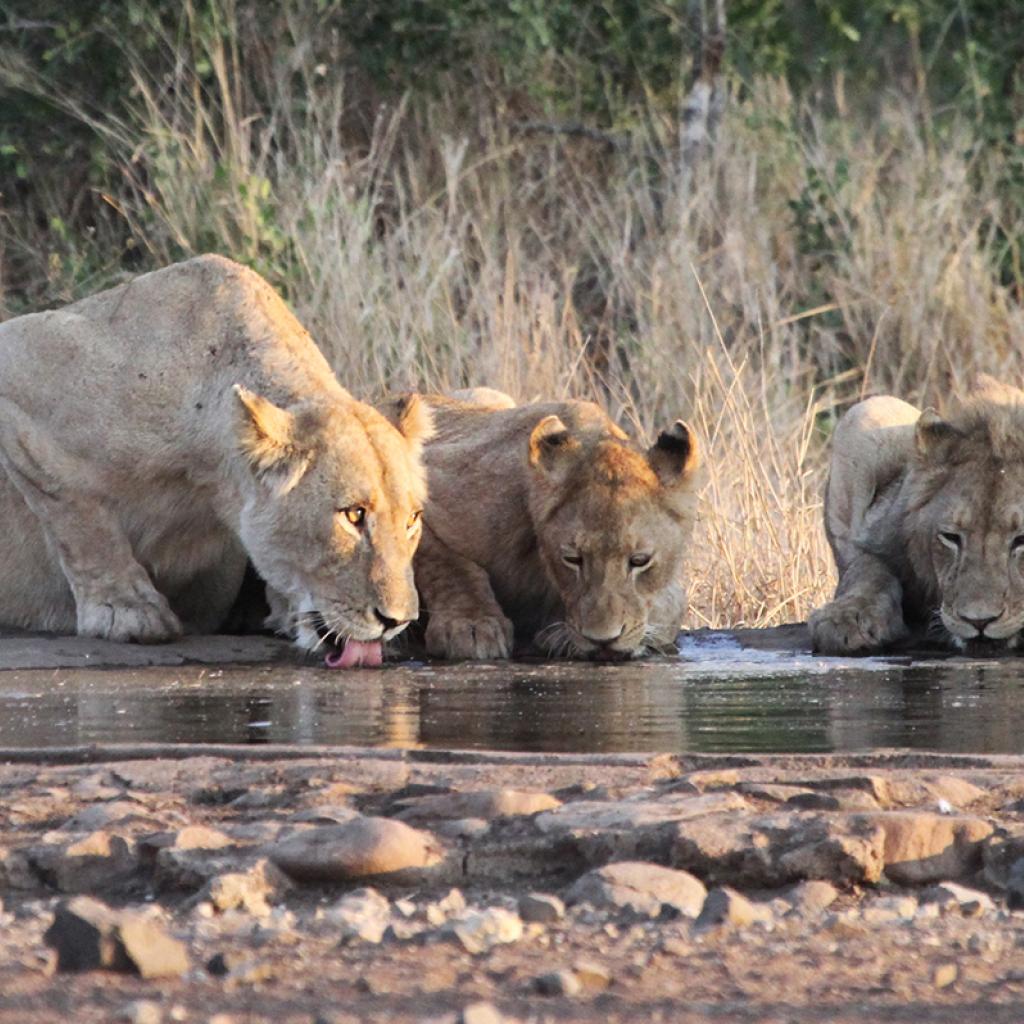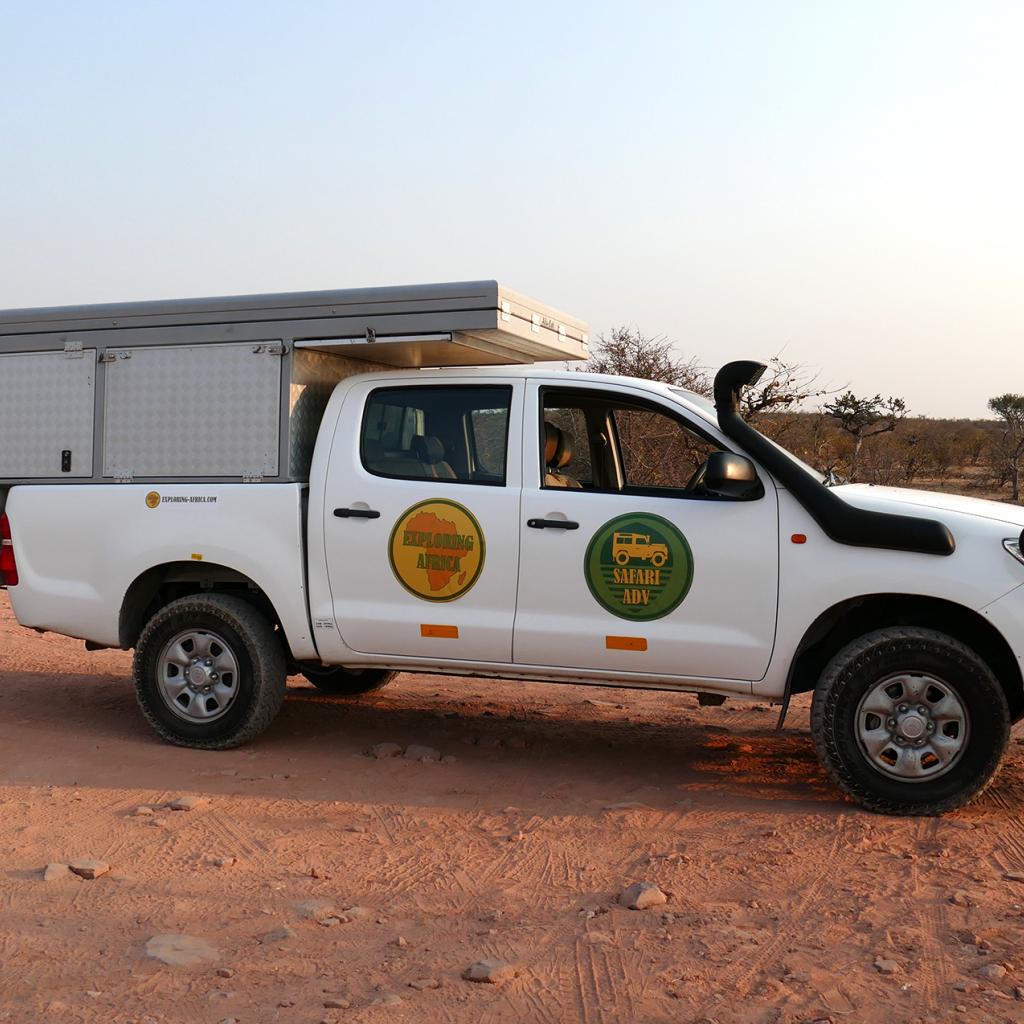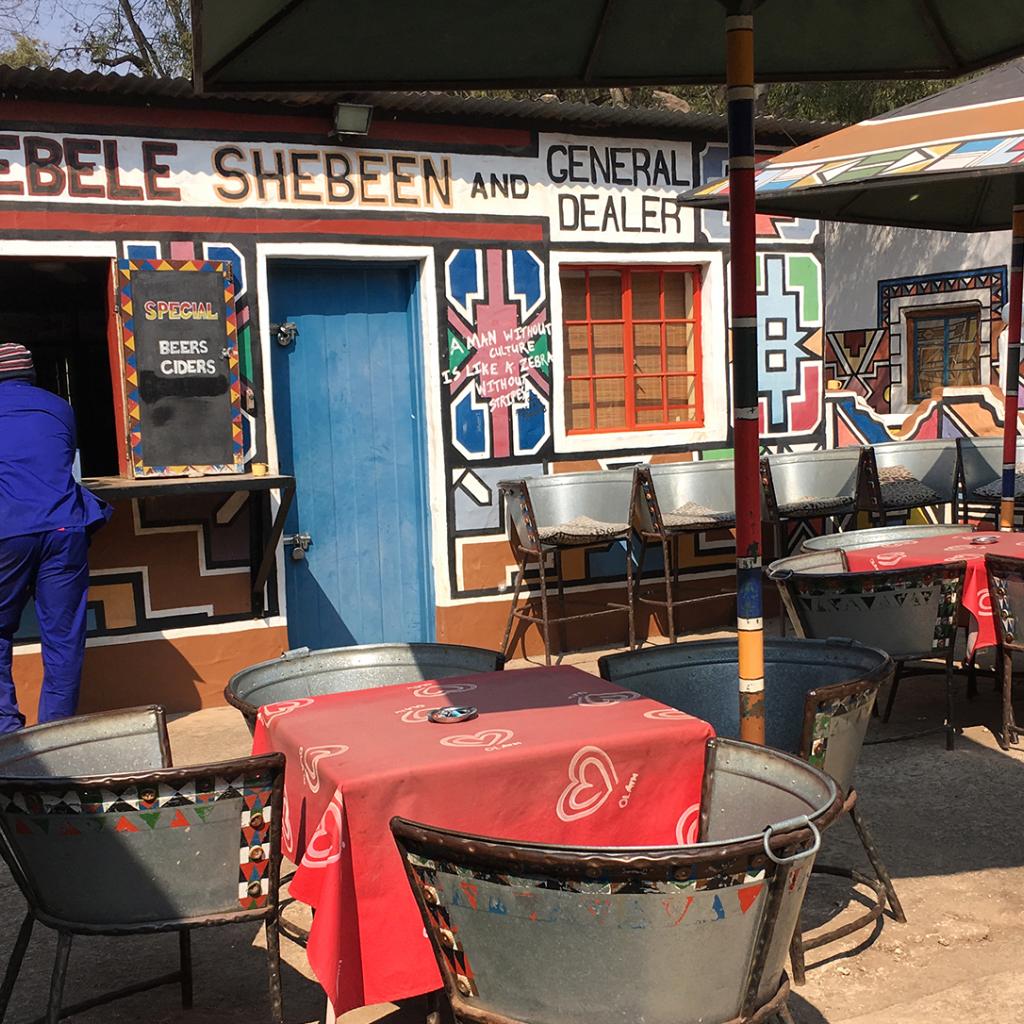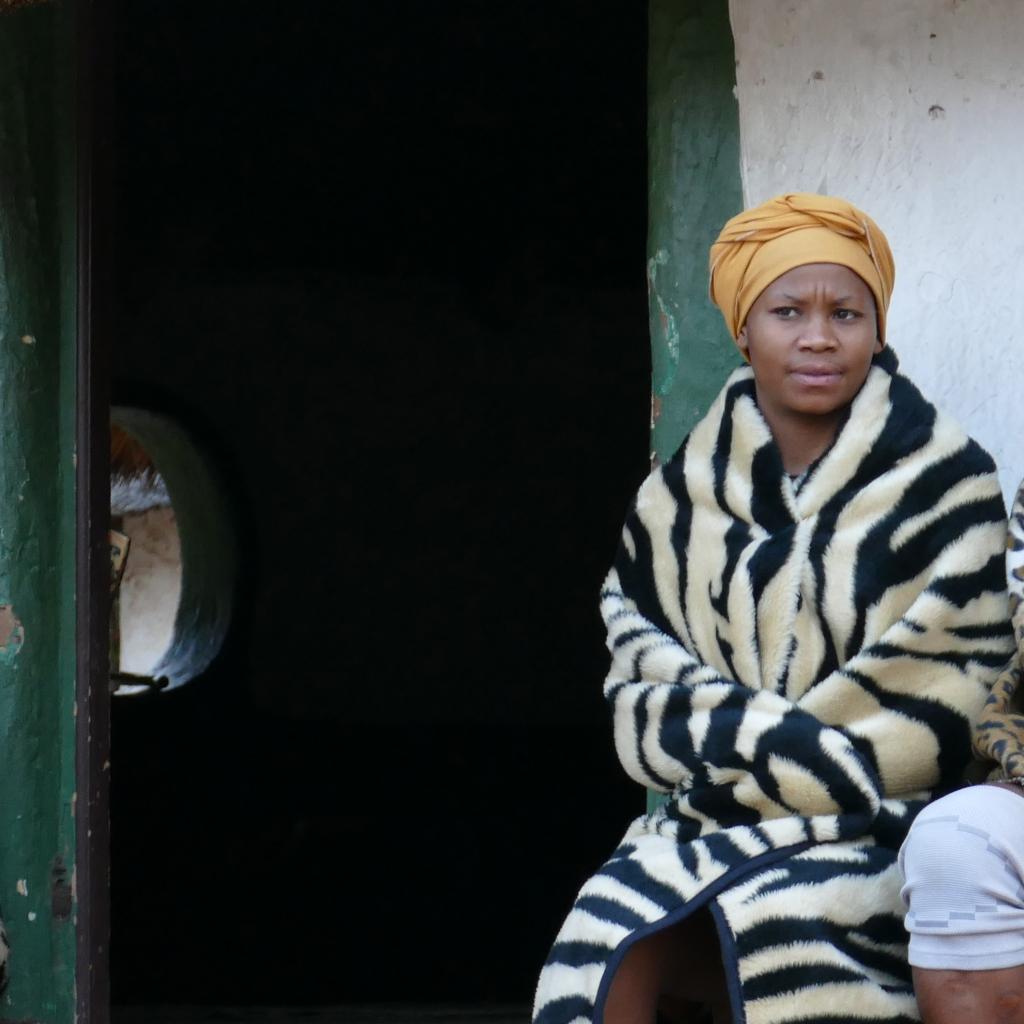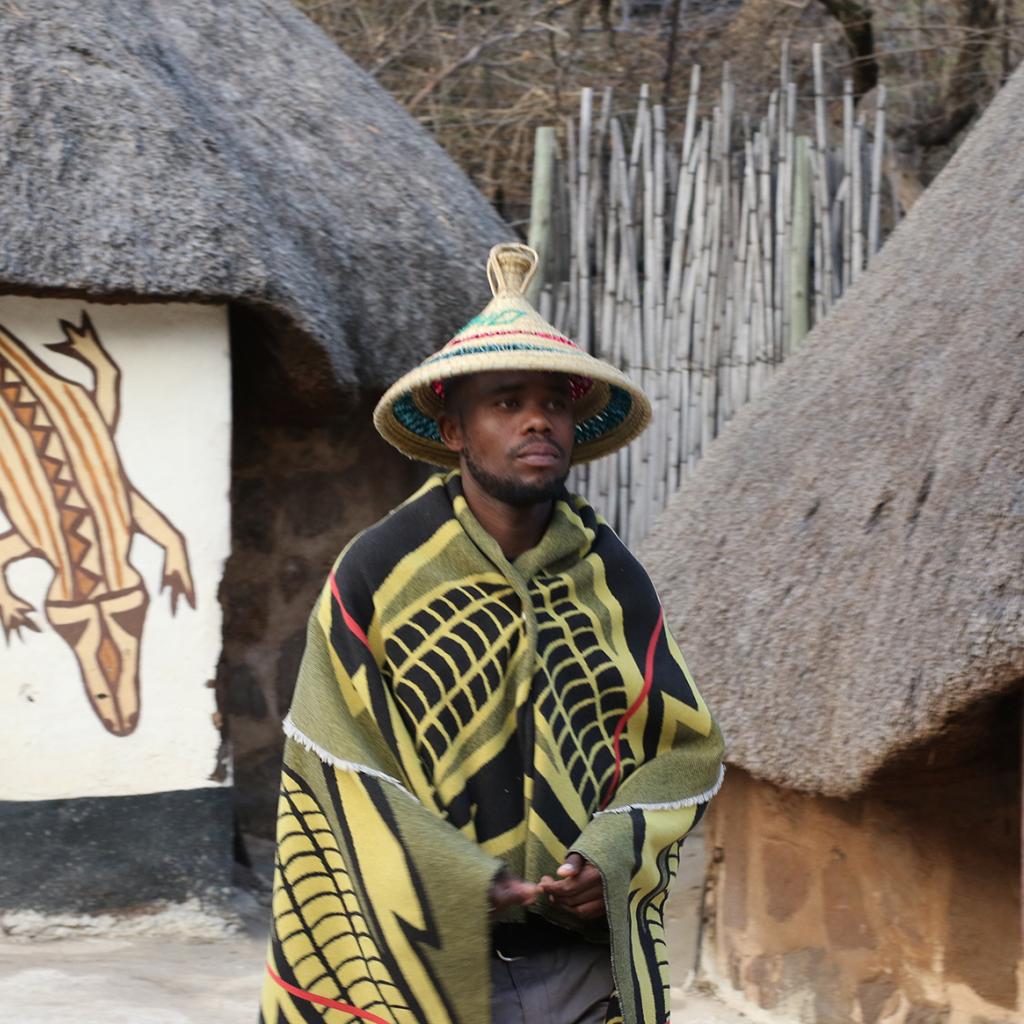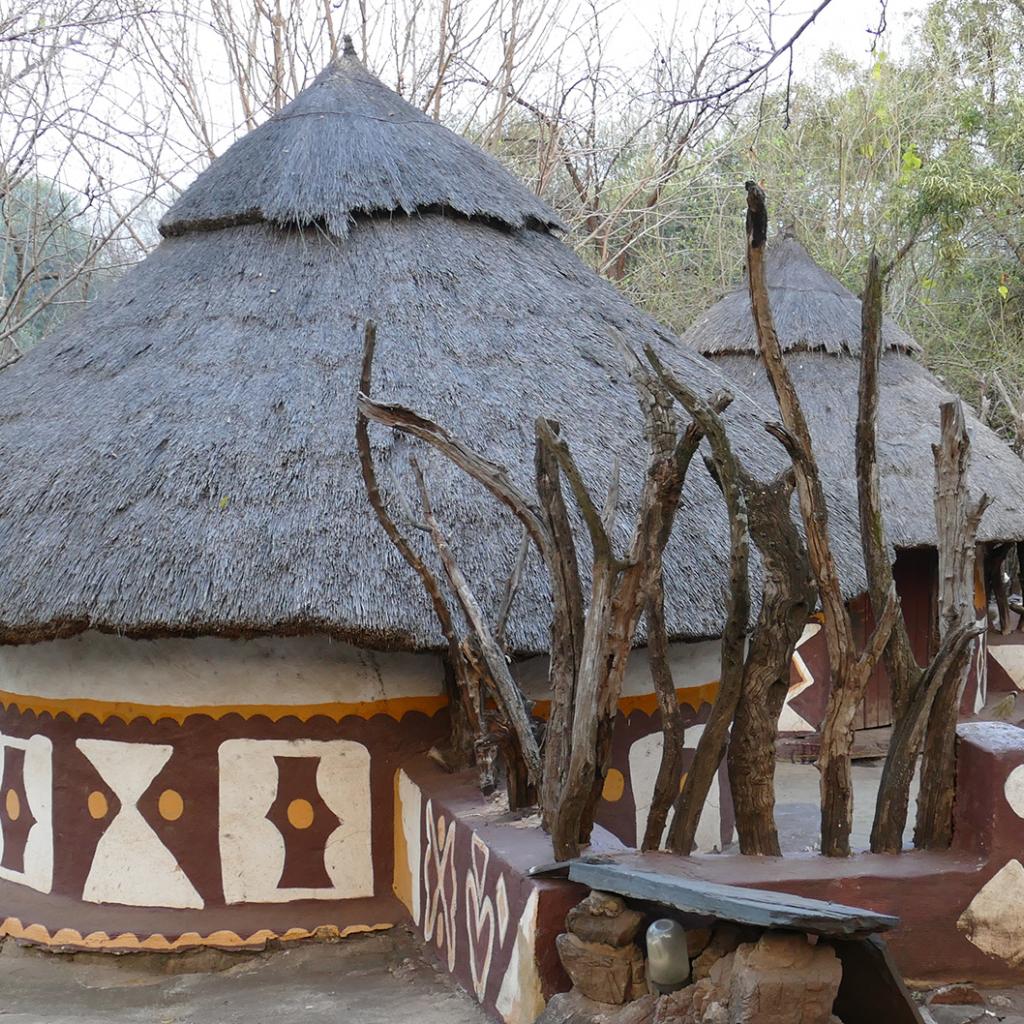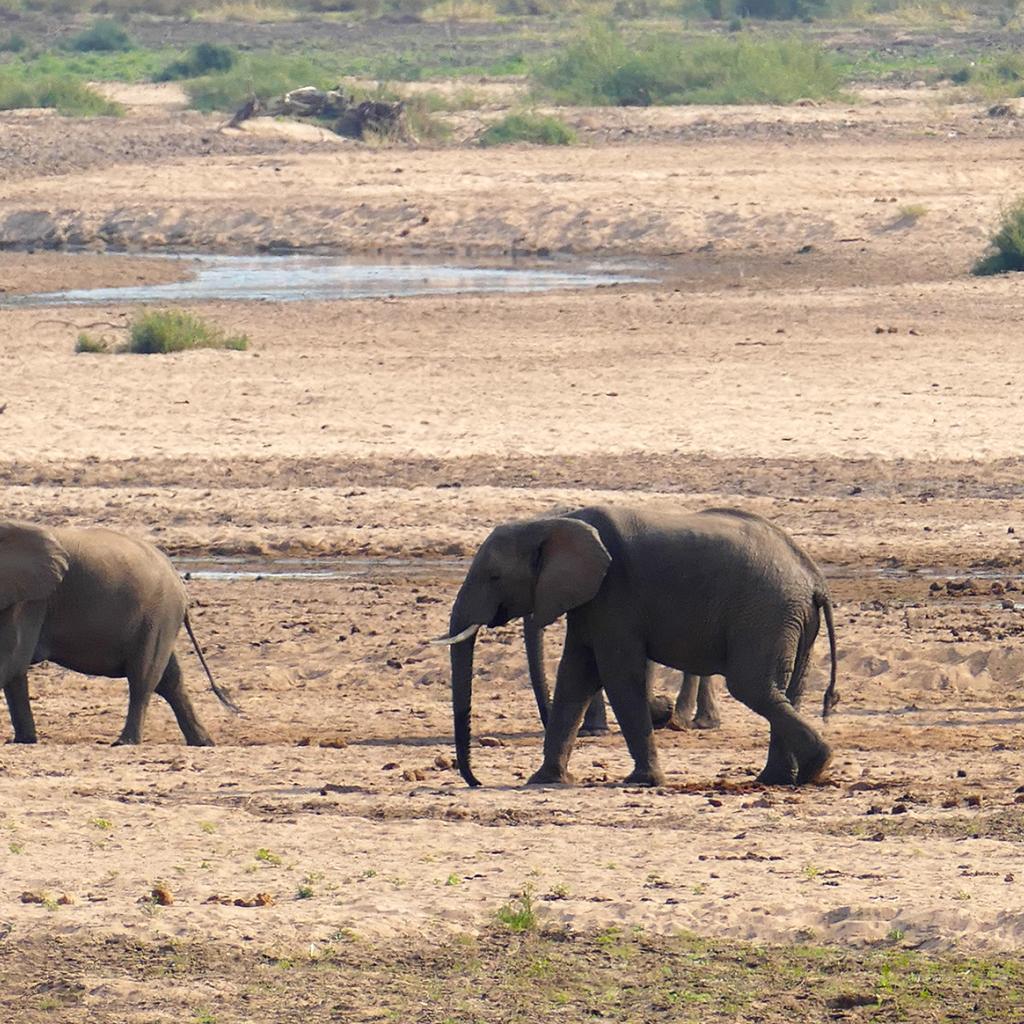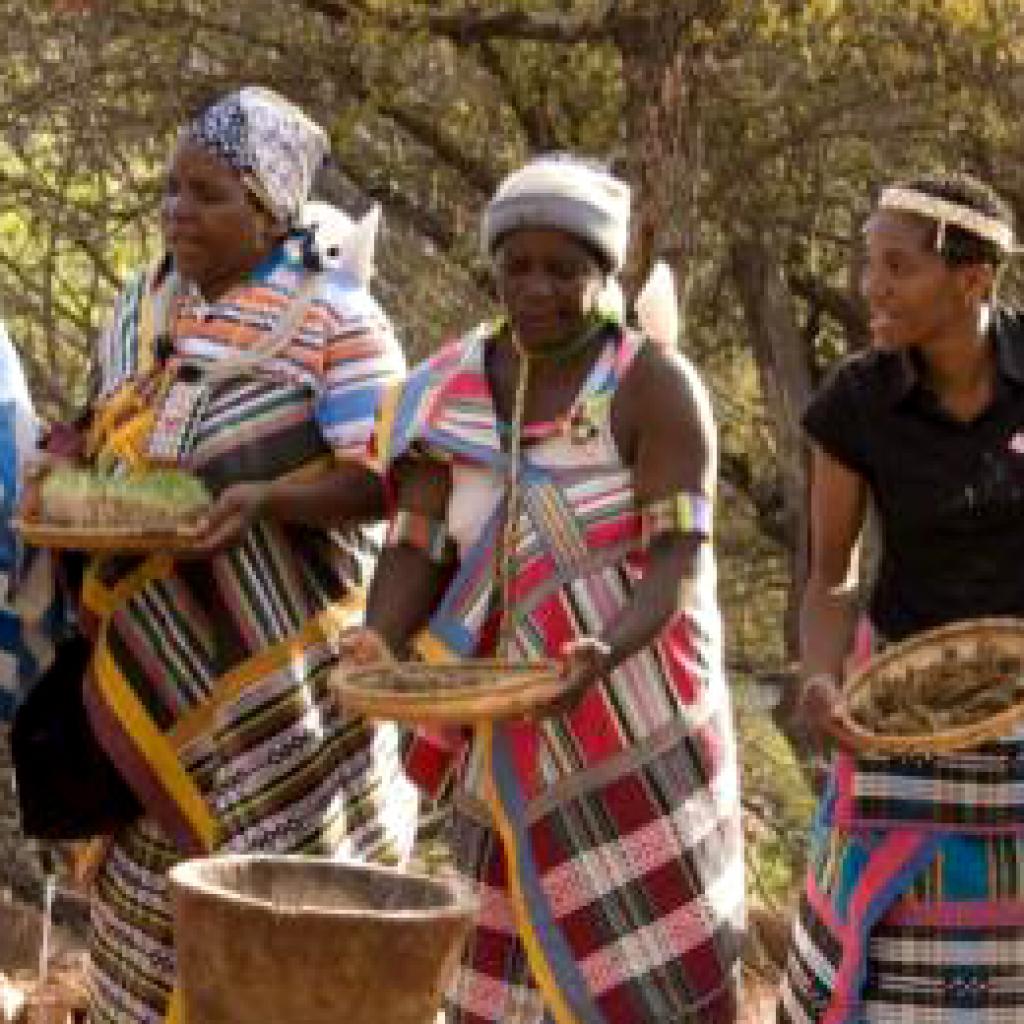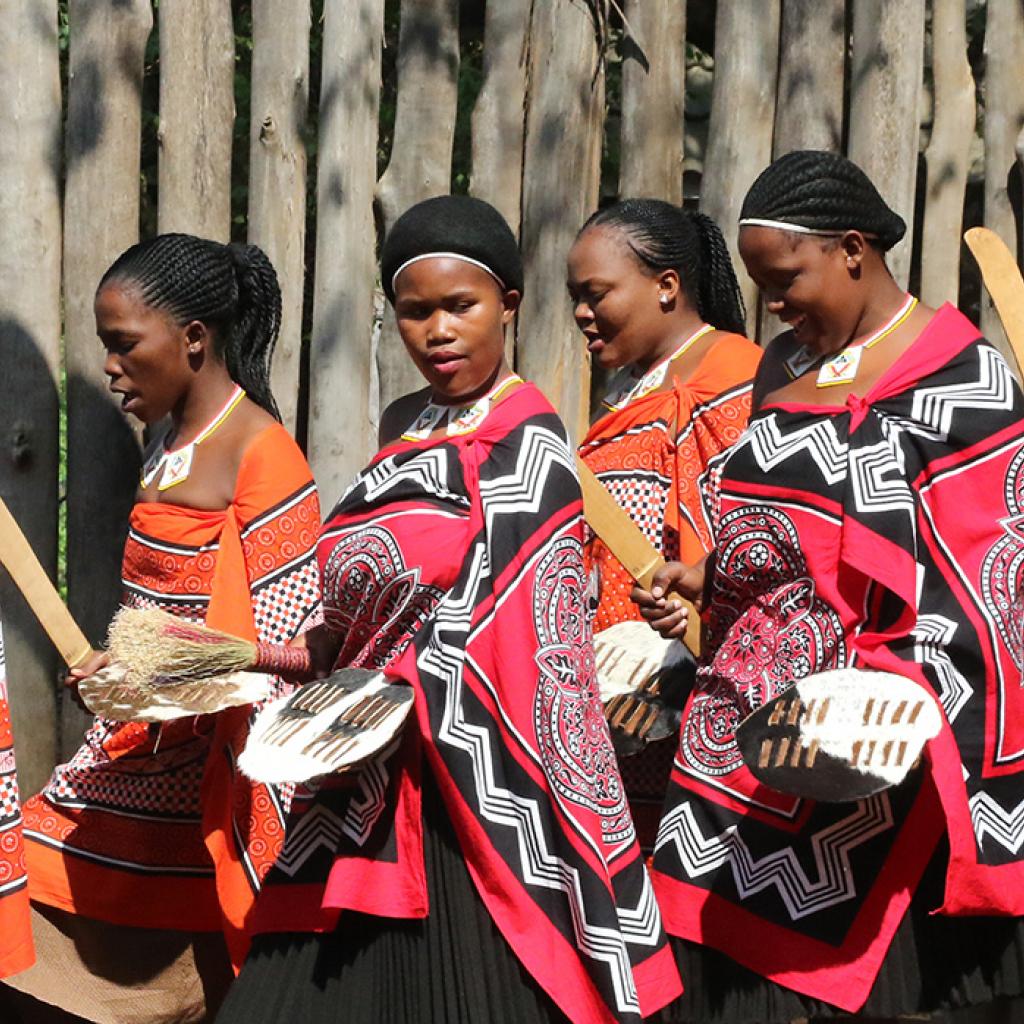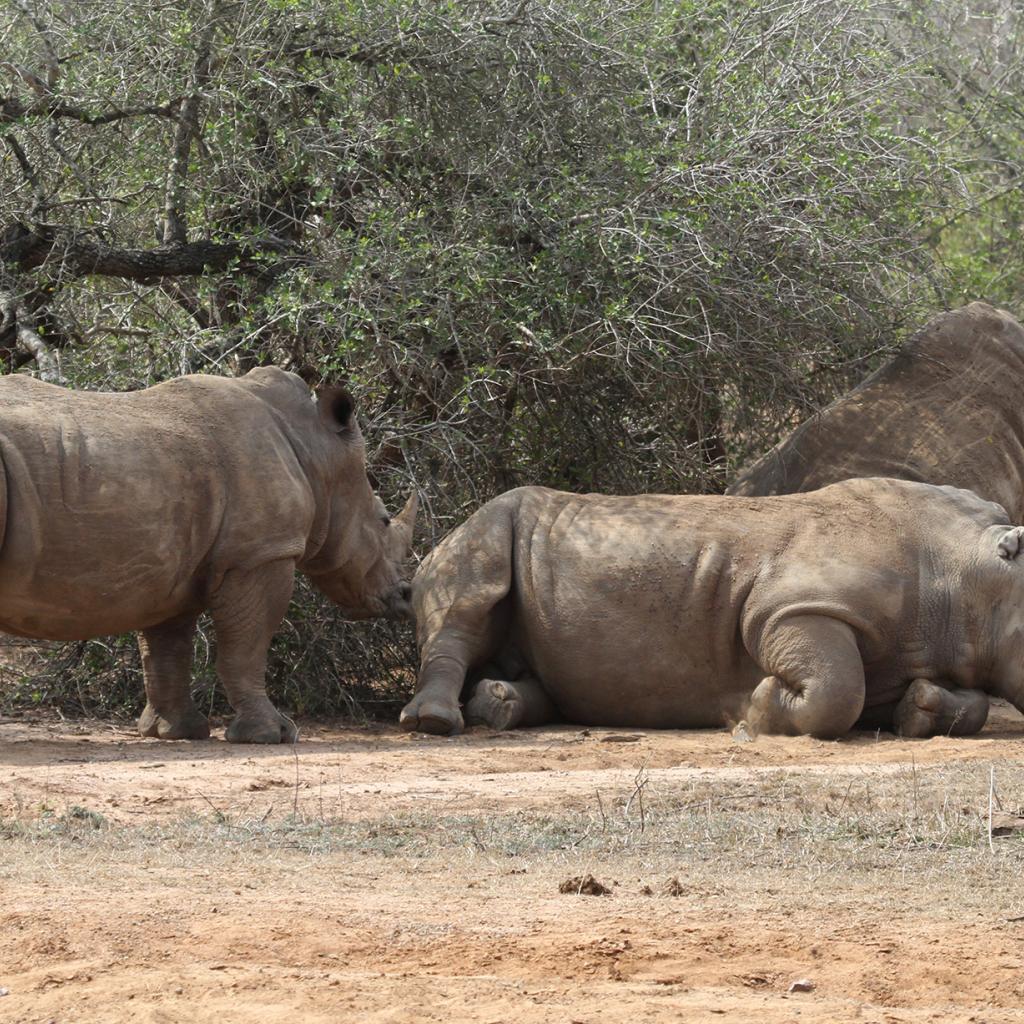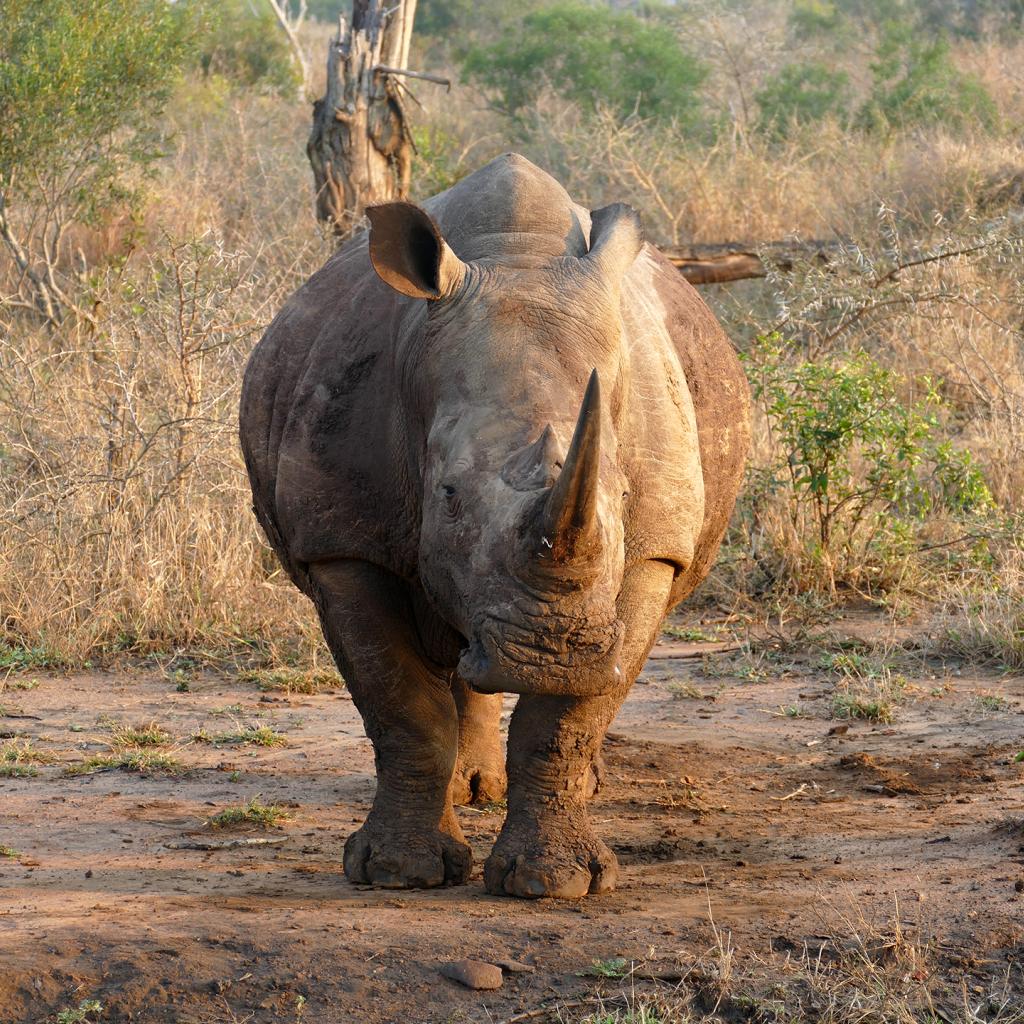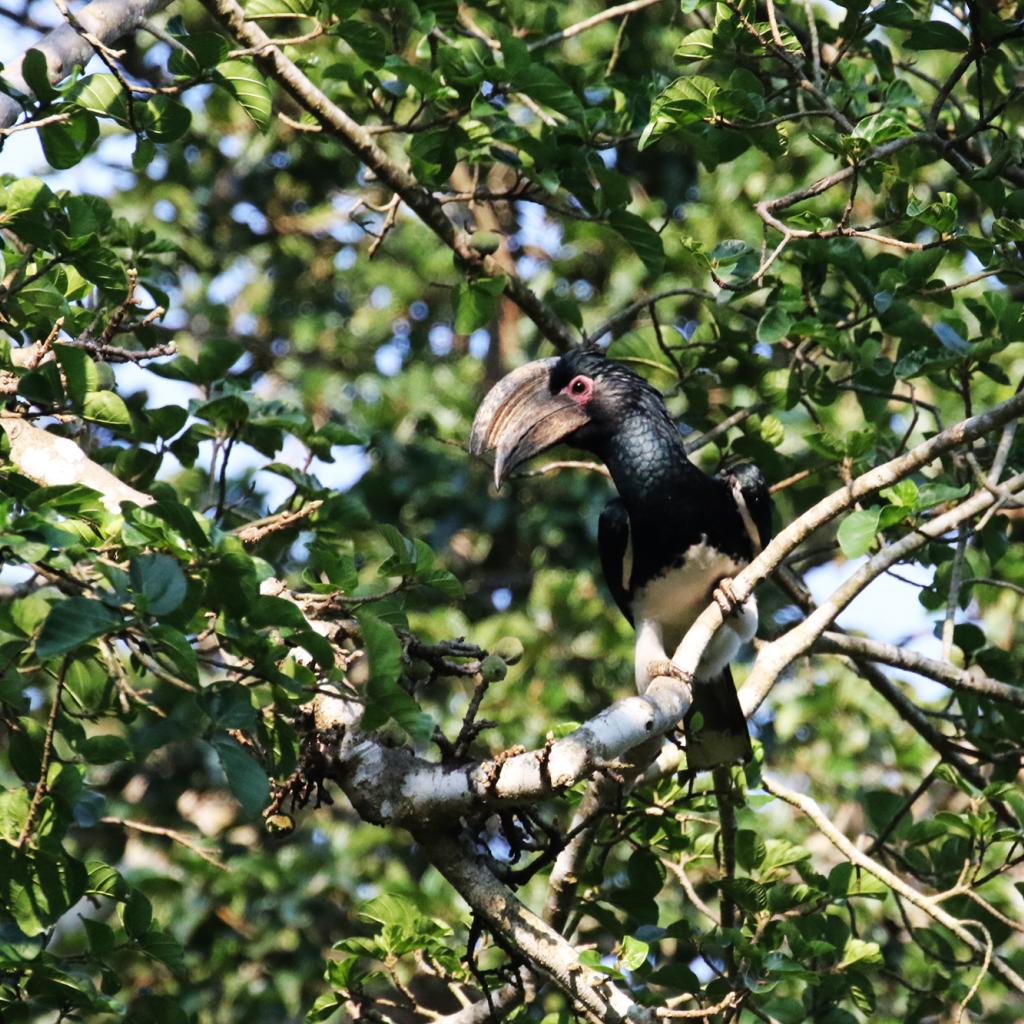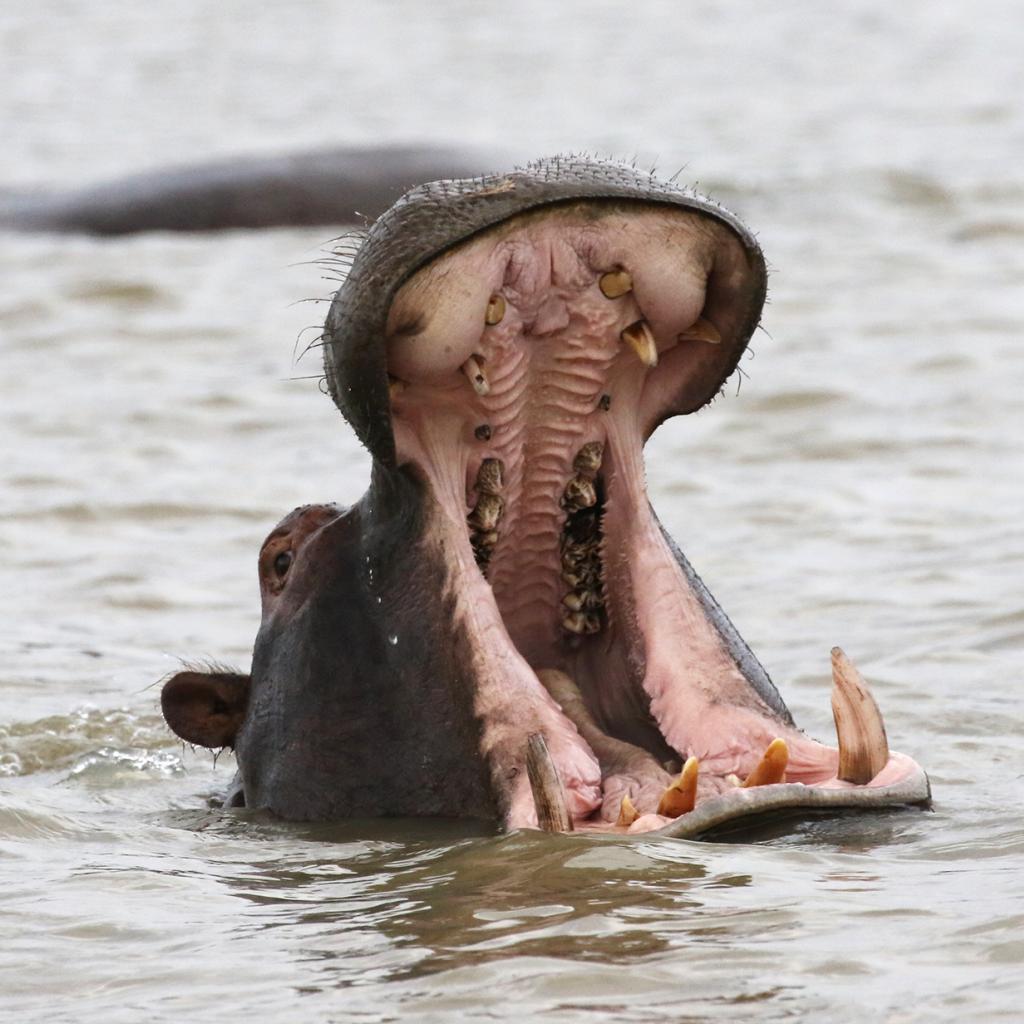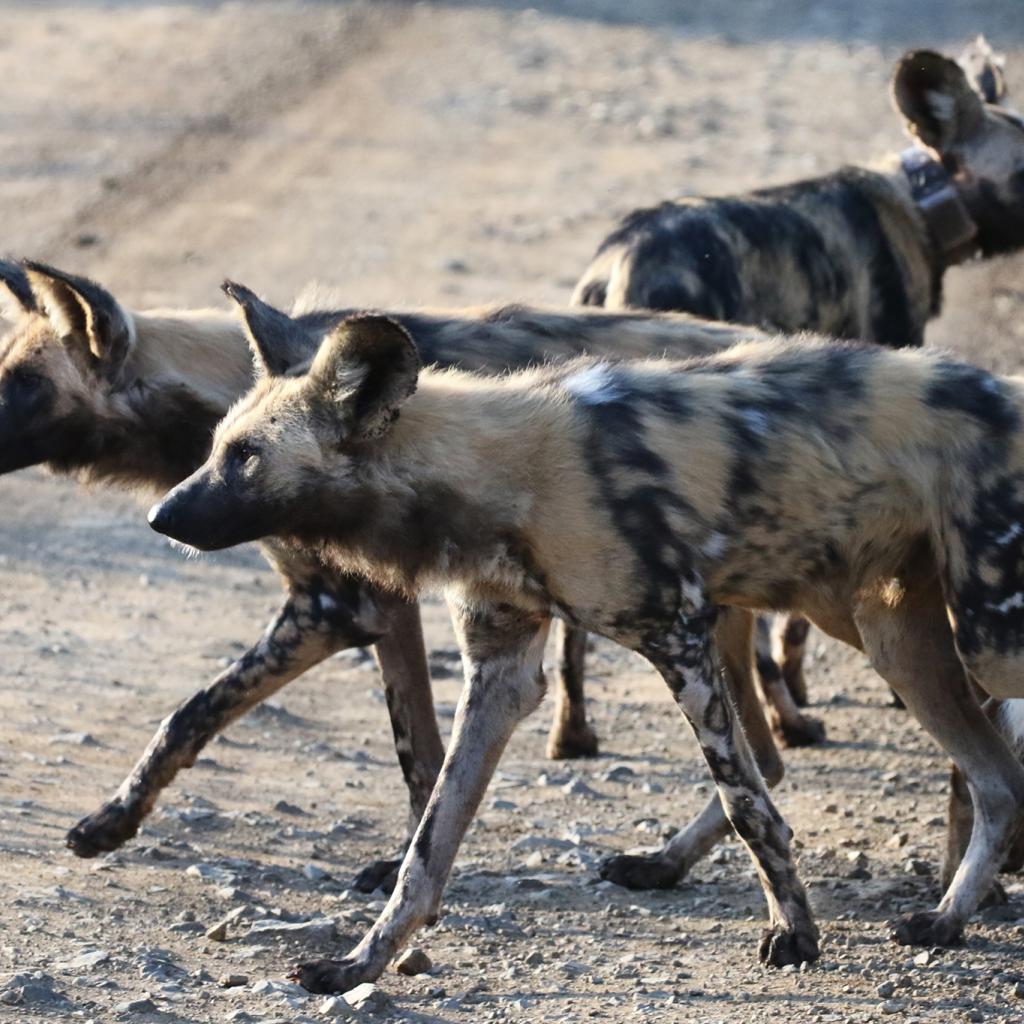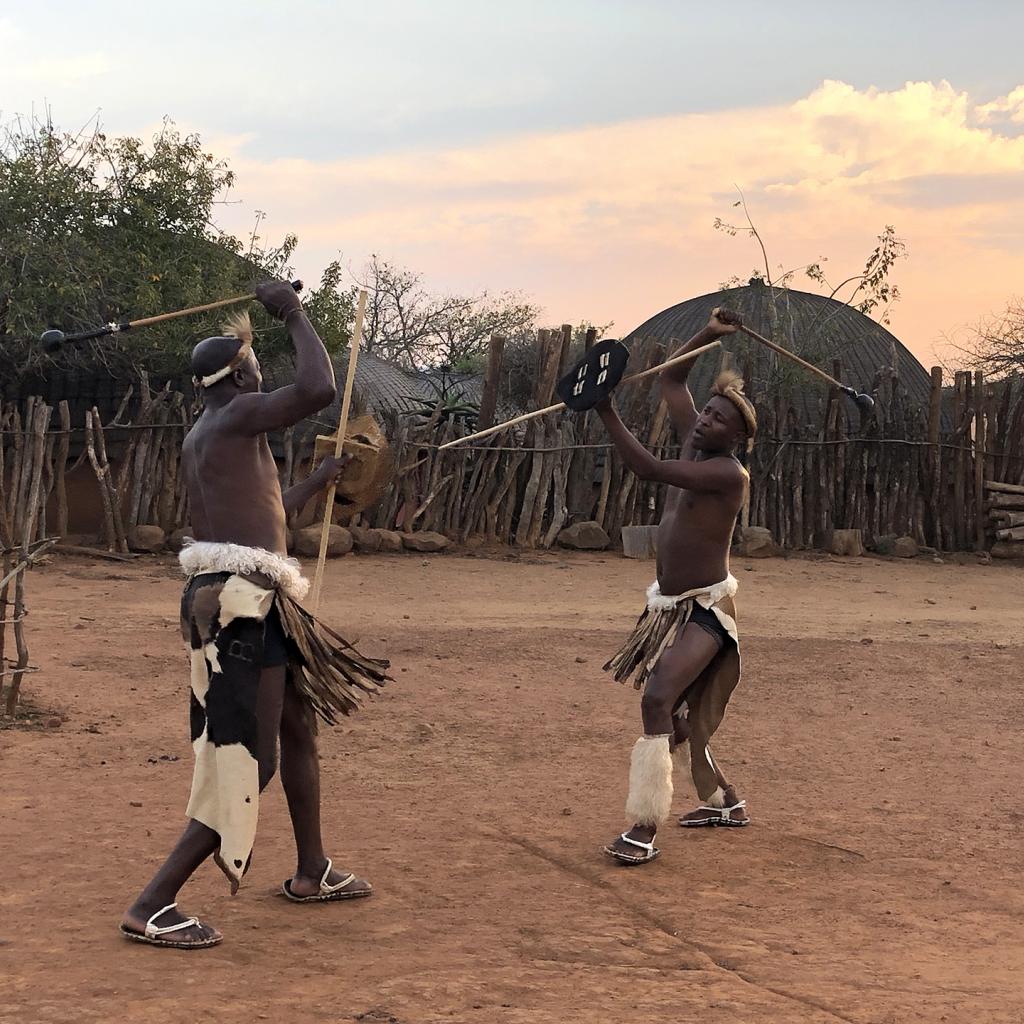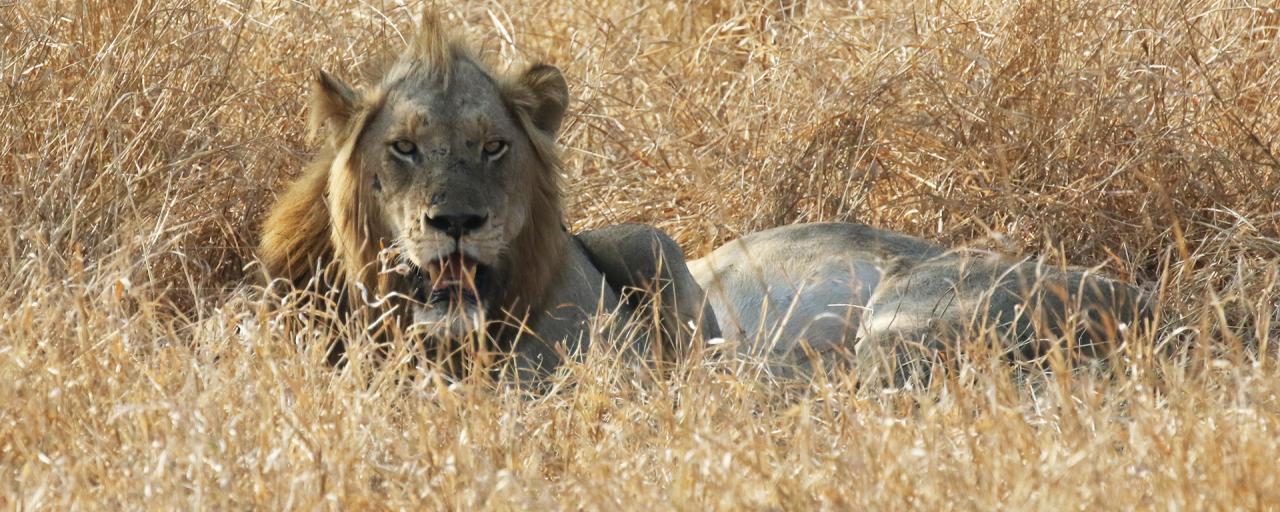
Kruger National Park: Lion - Photo Credits: Romina Facchi
The Kruger National Park in South Africa
The Kruger National Park is located in South Africa, in the Eastern part of the country, on the border with Mozambique; it occupies an area of about 20,000 square kilometers, it is 350 km long and 60 km wide, the longest internal road is the H 1, that measures 454 km and starts from the Malelane entrance and reaches the Pafuri entrance.
The Kruger is the largest nature reserve in South Africa and it is part of the Great Limpopo Transfrontier Park, along with the Limpopo National Park in Mozambique, the Gonarezhou National Park, the Mannjinji Pan Sanctuary and the Malipati Safari Area, the latter three located in Zimbabwe, the Sengwe region, also in Zimbabwe and the Makulele region in South Africa; the total area of the cross-border park covers 32,000 square kilometers.
The Kruger National Park contains 6 different ecosystems, that present different vegetation and species of animals.
The ecosystems of the Kruger National Park:
Sandveld: the Sandveld is characterized by a sandy ground, the landscape is corrugated and mountainous with deep valleys;
Gabbro: the gabbro is an intrusive rock, its appearance is similar to granite, older and harder than basalt; the soil that derives from the gabbro is commonly called "black cotton";
Granite (Granite): the Western part of the park is characterized by gentle hills and deep drainage systems; the soil is usually not very fertile, sandy and rich in silicone, the few mineral salts are brought downstream by the rains and create plain areas, the grass that grows here is the favorite of herbivores;
Floodplains and riverines: here the soil is fertile and the vegetation that grows in these areas contains many nutrients;
Basalt: most of the Eastern section of the park is made up of plains in the basement of which is basalt, rock that has disintegrated quite quickly, in this way there are no promontories and hills; the soil is dark because it contains a high concentration of organic material;
Rhyolite: the hills of Lebombo, that form the Eastern boundary of the park, consist of rhyolite, a type of very hard rock resistant to erosion and low in nutrients; the plants and herbaceous plants that grow here are not very nutritious;
Ecca shales: clayey of sedimentary origin found between the Eastern fertile plains and the undulating landscape of granite origin; here are coal and fossil remains.
The six different ecosystems are responsible for the high biodiversity of the Kruger National Park: in fact there are more than 2,000 different species of plants, of which 336 are trees.
The most common species of trees in the Kruger National Park:
The Acacia xanthophloea or fever tree acacia, the Adansonia digitata commonly known as baobab, the Combretum apiculatum (red bushwillow), the Combretum imberbe Wawra (leadwood), the Diospyros mespiliformis or Jackalberry tree, the Erythrina lysistemon (coral tree), the Ficus racemosa (Indian fig tree), the Hyphaene coriacea or Lala palm, the Kigelia africana or sausage tree, the Acacia nigrescens (knobthorn), the Sclerocarya Birrea or Marula, the Maclura pomifera or Osage orange, the Trichilia emetica or Natal Mahogany, the Pterocarpus rotundifolius (ound-leaved bloodwood) and the Spirostachys africana or Tamboti.
The animals present in the Kruger National Park:
In the Kruger National Park there are 147 different species of mammals, 507 species of birds, between residents and migrants, 114 species of reptiles, 49 species of fishes, 34 species of amphibians and 227 species of butterflies; the most numerous mammals are the impalas, about 152,000 specimens, the rarest are the Lichenstein hartebeest, only 50 live in the park.
All the Big Five are present and it is not difficult to spot them, especially the elephants, lions and buffaloes; for the rhinos and the leopards you need a bit of luck.
During this trip we spent 12 nights in the Kruger National Park, and we covered it all, from North to South, stopping for the night in the various camps inside.
We entered the Punda Maria gate and, the first day, we have scoured the Pafuri area (read the blog), here, following the course of the Pafuri river, we have seen so many nyalas, we had never seen so many, in addition to some elephants and several birds.
In the following days we started to go down South, trying to explore the park as much as possible, along the secondary roads and dirt roads that, usually, are less traveled.
For the exploration of the park, and to choose the roads to follow, we used the book "Kruger self-drive", it is very useful because for each road it describes the route, the territory, the animals that live in the area and the possibilities of sighting, in addition to the various observation points, picnic areas, observation huts and other useful indications.
The second day we started from Punda Maria and we arrived at Shingwedzi (read the blog), the Northern part of the park is less beaten by visitors and on this day we have not met almost anyone; in this area of the park there are many mopane trees that make sightings a little more difficult but they are very scenic especially during the dry season.
We took the S 63, a very scenic road that runs along the river; it was really nice to take this dirt road and, even if the river was dry, there were still some waterholes, where several herbivores gathered.
The following day we left Shingwedzi and we arrived at Mopani (read the blog), we witnessed a spectacular dawn and we spotted a leopard, even though it was very far; we have favored the secondary tracks, except for a stretch of the main road to do the ritual selfie with the stone that marks the crossing of the Tropic of Capricorn.
The Mopani Rest Camp takes its name from the expanses of mopane that cover this part of the park; the sightings are a little more difficult than in the Southern section, but, if you have the patience to look, you are certainly rewarded.
From Mopani we then moved to Letaba (read the blog) and the most important sighting of the day was a hyena with puppies, just at the roadside, two were small with the mantle still black, they were very tender.
The following day we traveled to the Olifants (read the blog); we have seen the first lions of this journey in the Kruger; even if we have seen many in our travels it is always an emotion.
As the name implies, the area of Olifants is known for the high concentration of elephants, these majestic mammals are found mainly between the two rivers the Olifants and the Sabie, but are present throughout the Kruger.
From Olifants we then headed to Tamboti, near Orpen (read the blog), here the park starts to be more crowded but, along the secondary roads, we do not find anyone; we sighted the first white rhinos, they were three, it was nice to see them relaxed while they were browsing.
From Tamboti we go then to Satara (read the blog), here the landscape has changed drastically, it seems to be in the Serengeti plain in Tanzania; in this area, and in the most Southern area, we are more likely to spot the big cats, here we have spotted several lions, placed near the water sources waiting for prey.
From Satara we headed to the South West where Skukuza is located (read the blog); we spent the last days in the Southern part of the park, dominated by the Sabie river, where most visitors are concentrated, as sightings are relatively simpler.
Here we have seen several lions, wild dogs, cheetahs, many elephants, many white rhinos, many giraffes, many species of birds and many antelopes; they were spectacular safari days.
In detail we spent two days in Skuzuza, scouring the surroundings (read the blog), we then moved to Crocodile Bridge (read the blog), where we stayed two nights doing exceptional safaris (read the blog); finally we spent the last night in Berg-en-Dal, crossing some less traveled areas of this place, and then leave the next morning from the Malelane gate, to continue our journey to Swaziland.
We have seen many animals including elephants, lions, cheetahs, African wild dogs, rhinos, a leopard, giraffes, zebras, wildebeests, buffaloes, different species of antelopes, hippos, Nile crocodiles, many species of birds and a honey rate, my favourite animal!
Every day we made spectacular sightings and we went through wonderful landscapes that we will always carry in our hearts!
